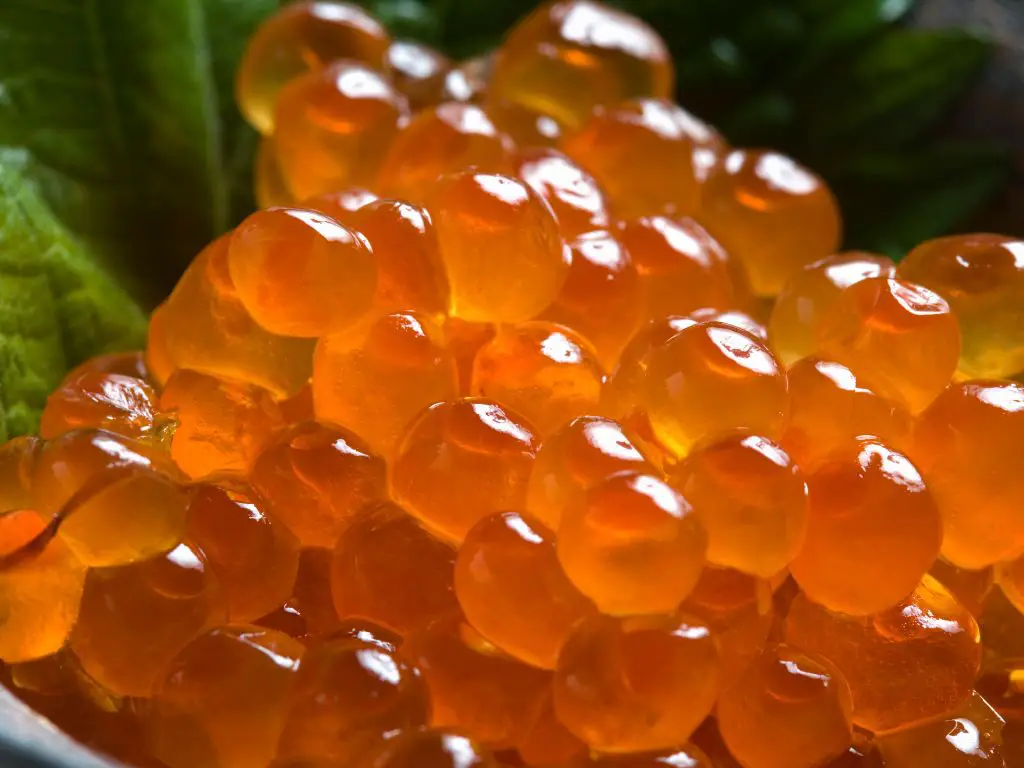Physical Address
304 North Cardinal St.
Dorchester Center, MA 02124
Physical Address
304 North Cardinal St.
Dorchester Center, MA 02124
Salmon roe, also known as salmon caviar, is a delicious and nutritious delicacy that can be enjoyed in various ways.
Whether you’re a sushi enthusiast, a seafood lover, or simply looking for a new ingredient to experiment with in the kitchen, curing your salmon roe is a fun and rewarding experience.
In this article, we’ll guide you through curing salmon roe, from choosing quality roe to flavoring the final product.
You’ll learn about different curing methods, storage techniques, and creative ways to incorporate cured salmon roe into your favorite dishes. So get ready to impress your friends and family with your newfound culinary skills!

Properly preparing the salmon roe is an important step in the curing process. Here are some tips for preparing the roe
Start by gently rinsing the roe in cold water to remove debris or excess salt. Be careful not to rinse the roe too vigorously, as this can damage the delicate eggs.
Once the roe is clean, gently pat it dry with a paper towel.
Salmon roe is typically covered by a thin membrane that should be removed before curing.
You can remove the membrane by gently sliding a knife blade under it and carefully pulling it away from the eggs. Be careful not to damage the eggs in the process.
Salmon roe is delicate and should be handled with care to avoid damaging the eggs. Avoid squeezing or pressing the roe, as this can cause the eggs to burst.
Use a gentle touch when cleaning and preparing the roe, and avoid using sharp or rough tools that could damage the eggs.
When handling the roe, it’s also important to work quickly to minimize the time it’s exposed to air, which can cause it to spoil.
Curing salmon roe can be done using a variety of methods, but two of the most common are dry curing and wet curing. Here’s what you need to know about each method
One method for dry curing salmon roe involves combining two parts sugar, three parts borax, and one part salt and scattering the mixture onto the skeins.
After curing, the salmon roe can be preserved in a clean glass jar wrapped in butcher’s paper or uncolored newspaper.
To achieve the desired texture and flavor when dry-curing salmon roe, it’s important to experiment with the amount of salt, sugar and borax used in the curing mixture.
Additionally, the time the roe is cured can impact its texture and flavor. For a firmer texture and a more intense flavor, consider curing the roe for longer.
Alternatively, a shorter curing time may be more suitable if you prefer a softer texture and a milder flavor.
Wet curing involves immersing the salmon roe in a solution of salt and water, also known as brine. This method is popular for producing salmon roe with a softer texture and milder flavor. Here’s what you need to know about wet curing
To wet-cure salmon roe
To achieve the desired texture and flavor when wet curing salmon roe, experiment with the ratio of salt to water in the brine solution and the length of time the roe is cured.
A higher ratio of salt to water will result in a saltier flavor, while a shorter curing time will produce a milder flavor.
Both dry and wet curing methods can produce delicious cured salmon roe but produce different textures and flavors.
Dry curing produces firmer and saltier roe, while wet curing produces softer and milder roe. Consider experimenting with both methods to find which one you prefer.
Cured salmon roe is a delicious and versatile ingredient that can be enjoyed on its own or used as a topping for sushi, salads, and more.
While cured salmon roe is already flavorful, you can enhance its taste by adding different flavorings to the curing mixture.
To add flavor to your cured salmon roe, consider adding herbs, spices, or other ingredients to the curing mixture.
Popular flavorings include dill, ginger, citrus zest, and soy sauce.
These ingredients can be added to the curing mixture before curing the roe to infuse it with flavor.
Don’t be afraid to experiment with different flavors and ingredients to find your favorite flavor profile for cured salmon roe.
Consider trying different herbs and spices or experimenting with different salt or sugar types.
Once you’ve successfully cured your salmon roe, it’s important to store it properly to maintain its freshness and flavor.
To store cured salmon roe, wrap it tightly in plastic wrap, place it in an airtight container, and store it in the refrigerator.
Cured salmon roe can last quite a long time in the refrigerator, but it’s best to consume it as soon as possible for maximum freshness and flavor.
Cured salmon roe is a versatile ingredient that can be enjoyed in a variety of ways. Consider serving it as a topping for sushi or salads, or simply enjoy it as a snack.
Cured salmon roe pairs well with cream cheese, lemon, and dill. Cured salmon roe can add flavor and texture to many different dishes.
Consider using it as a topping for deviled eggs, garnishing seafood dishes, or even incorporating it into pasta dishes.
Get creative and experiment with different ways to use this delicious ingredient!
Curing salmon roe is a labor of love requiring patience and attention to detail, but the result is well worth the effort.
By choosing quality roe, preparing it carefully, and experimenting with different curing and flavoring techniques, you can create a delicious and versatile ingredient that’s sure to impress.
Whether you’re using it as a topping for sushi, incorporating it into pasta dishes, or simply enjoying it as a snack, cured salmon roe is a delightful addition to any meal.
So why not give it a try and discover a new culinary adventure?